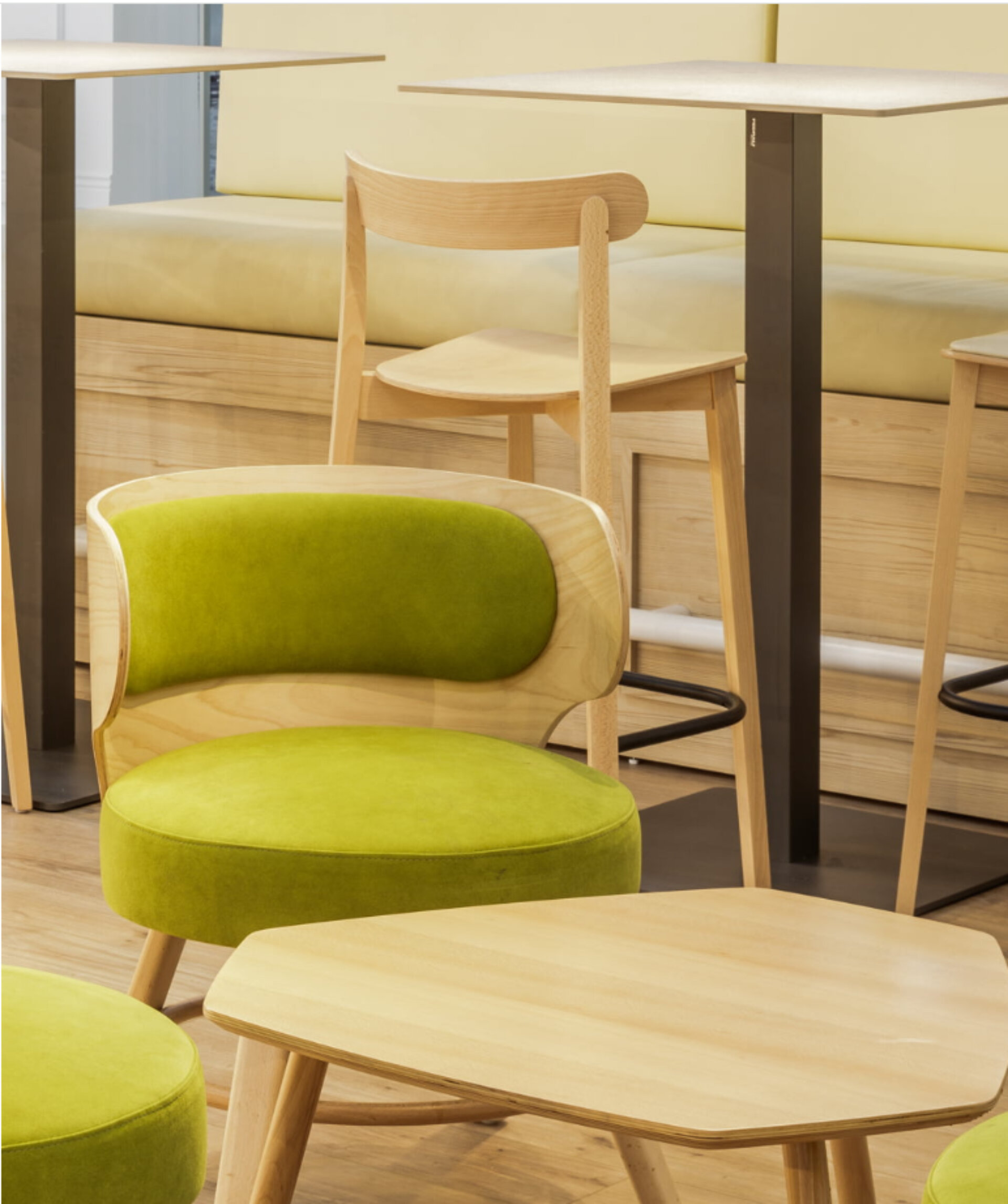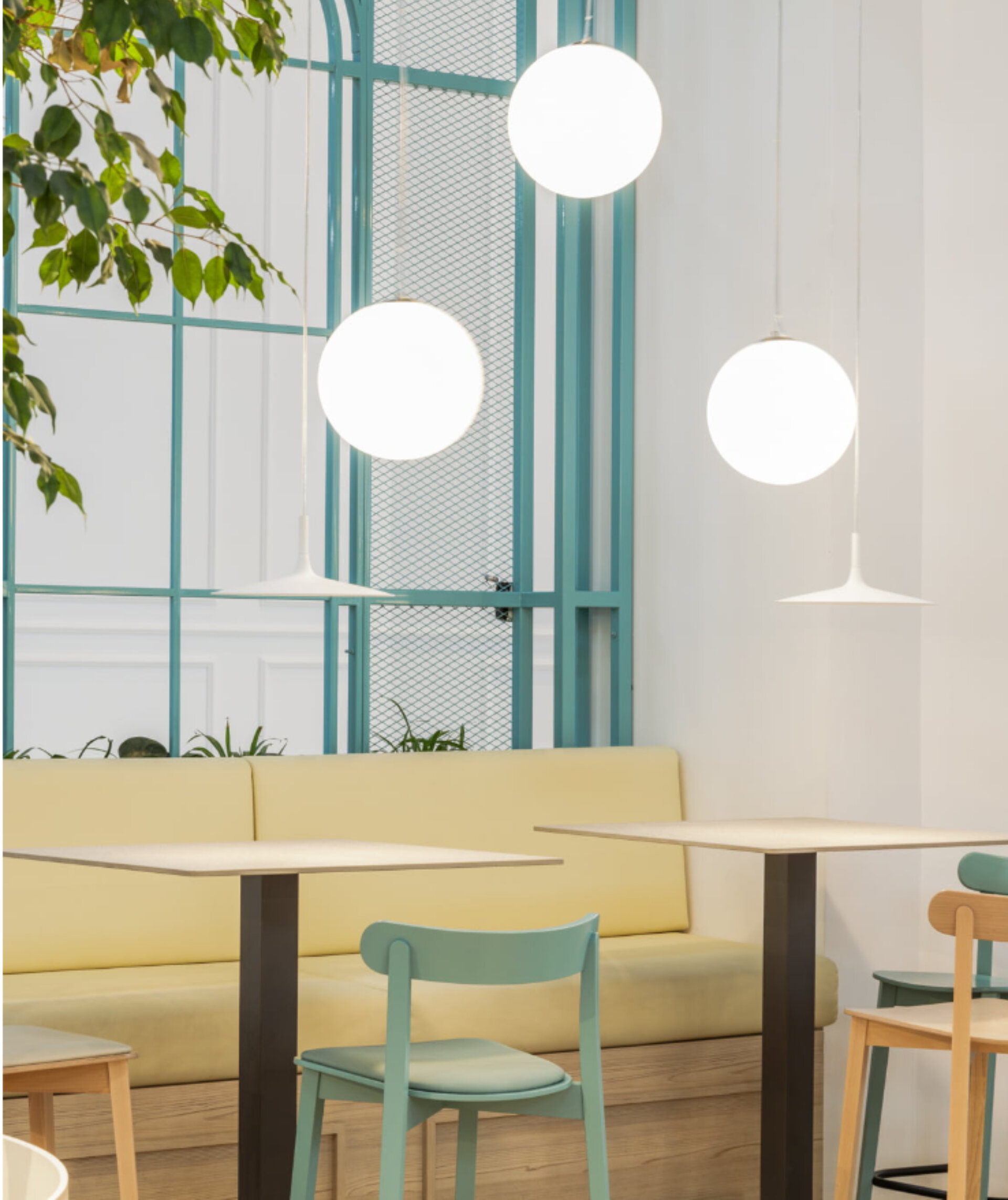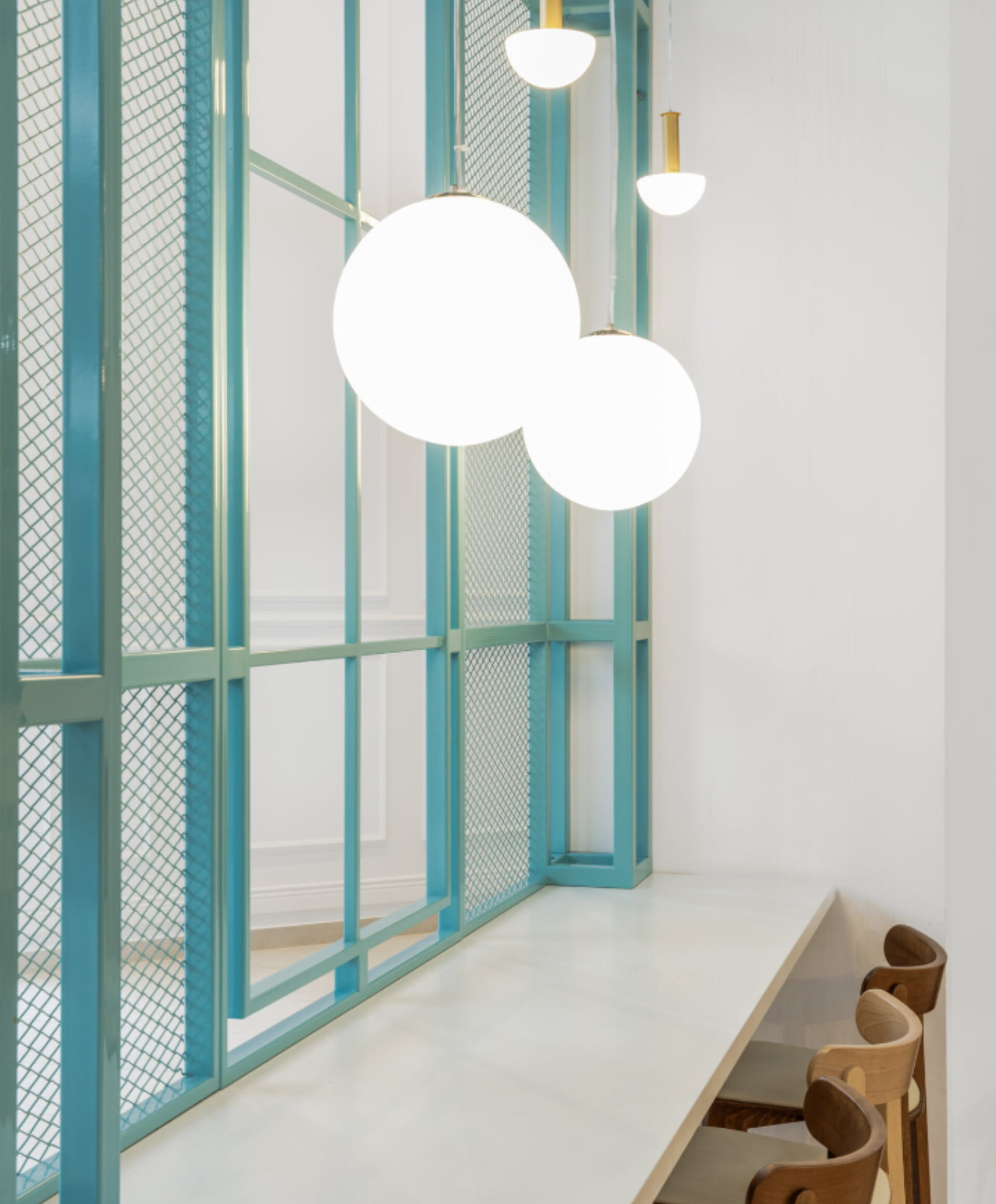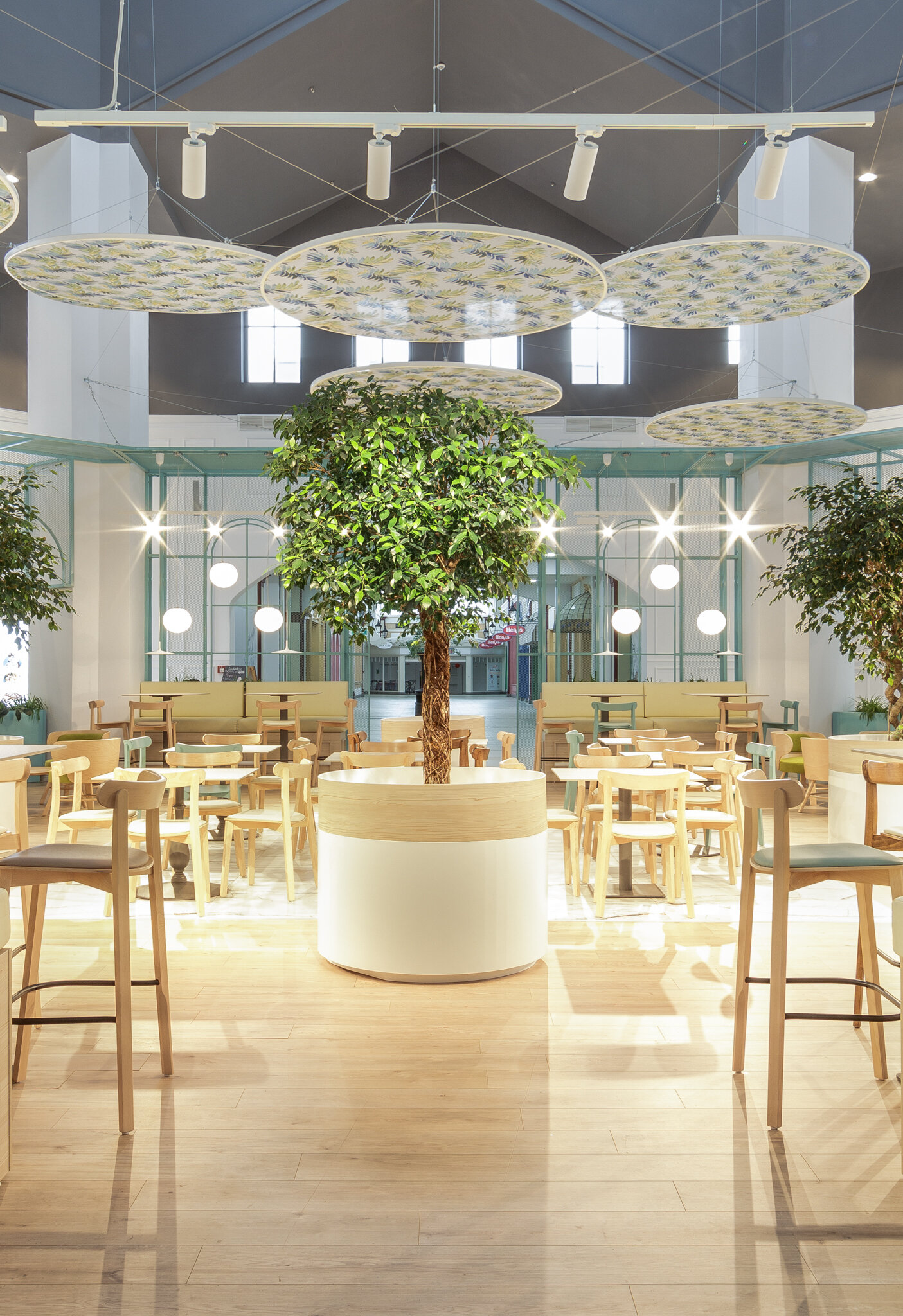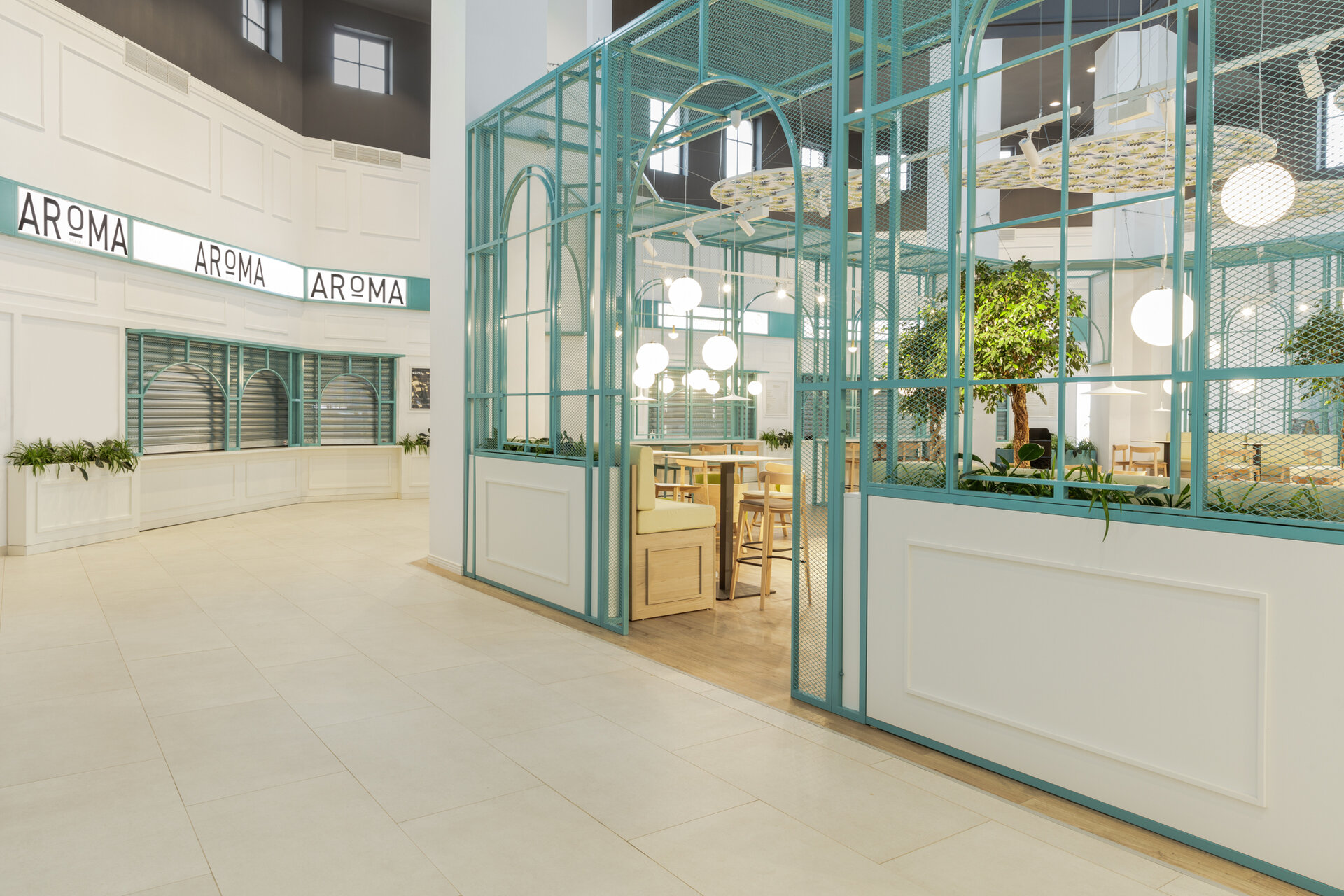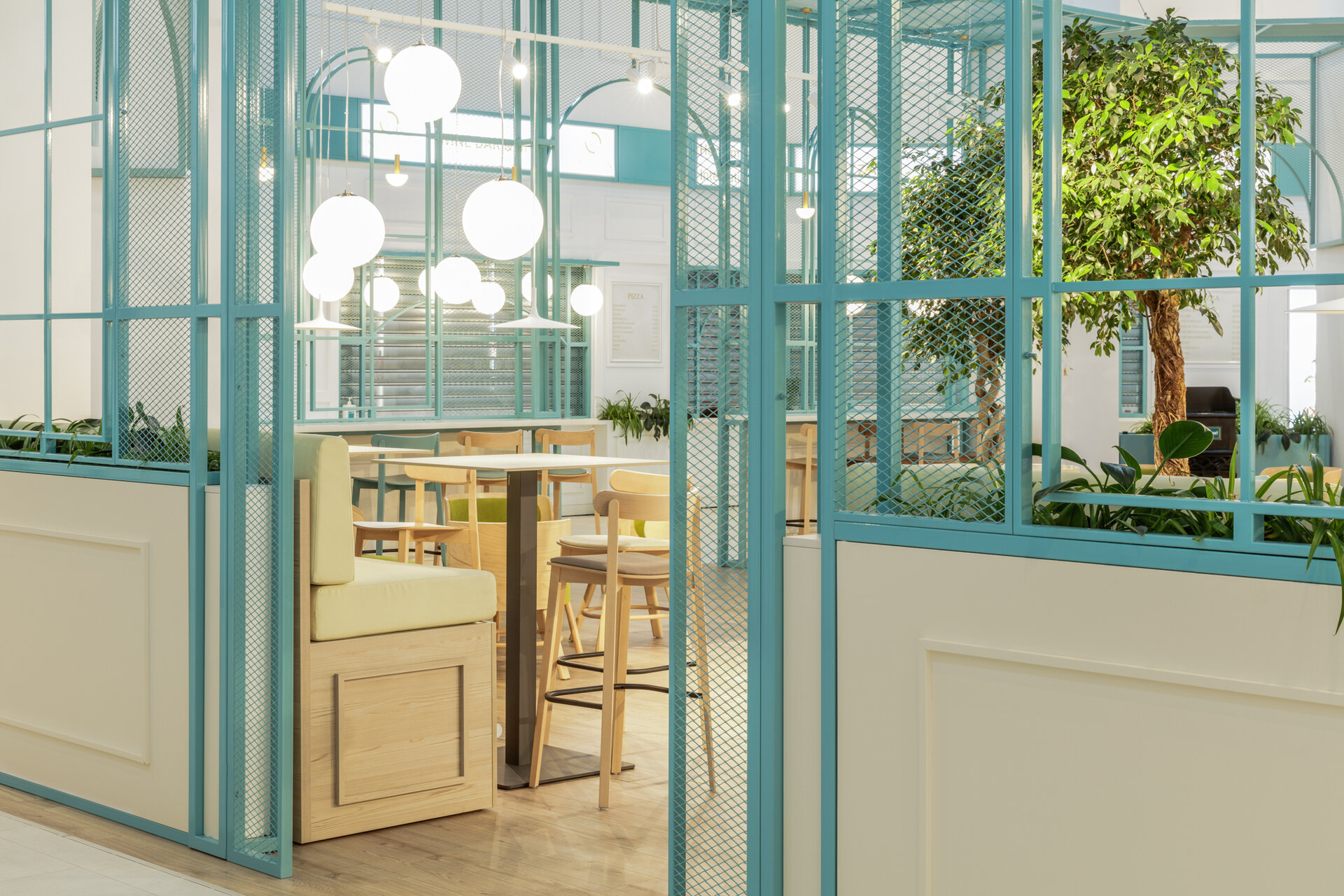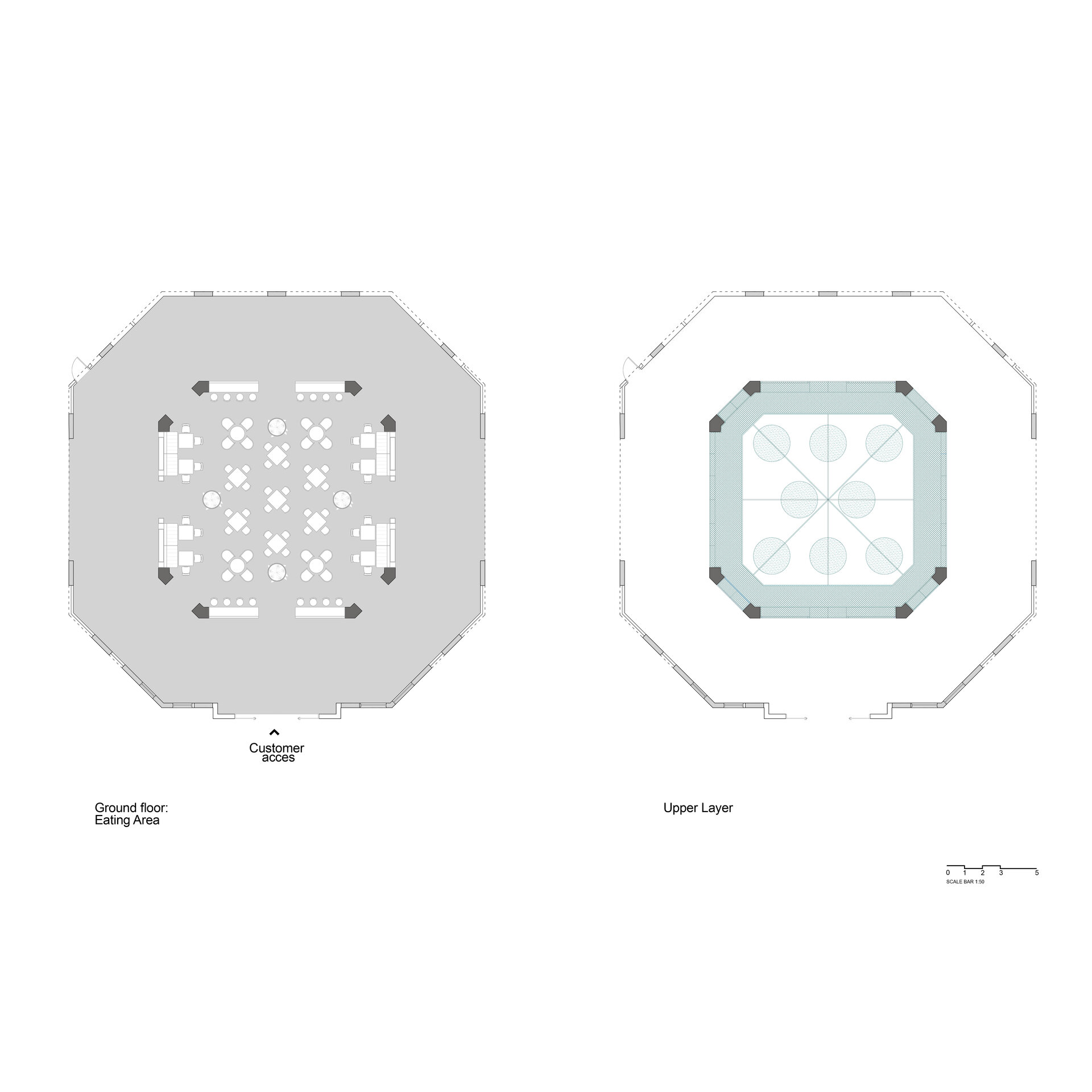
Foodcourt Fashion House
Authors’ Comment
When designing the food court for Fashion House Militari, we drew inspiration from the concept of a vibrant courtyard, crafting a welcoming environment for dining, socializing, and relaxation.
The space is divided into two horizontal layers: the lower eating area and an upper layer that subtly reduces the height, fostering a cozy and intimate atmosphere without sacrificing openness.
A see-through metal structure, embellished with graceful arches, seamlessly connects these layers, enhancing the sense of space while creating a gentle division. This architectural element not only frames the food court beautifully but also maximizes the flow of natural light, contributing to a bright and airy ambiance.
The soft teal hue of the structure, combined with lush greenery, evokes a connection to nature, bringing the outdoors indoors.
As you walk through, the vivid colors immediately catch your eye, yet the design’s transparency invites a glance into the activities within. The food court, while distinct, feels harmoniously integrated with the surrounding space, fostering interaction with the larger environment. The blend of vibrant colors and natural wood elements offers a soothing and refreshing break from the building’s bustle, encouraging visitors to pause, recharge, and enjoy their surroundings.
Environmentally conscious materials, such as responsibly sourced wood and energy-efficient lighting, were used to ensure the sustainability and durability of the design. Featuring a variety of seating options to accommodate diverse needs, the layout underscores the design’s accessibility.
In conclusion, our aim was to have design and functionality meet to enhance the user experience. The careful interplay between form and function creates a dynamic yet peaceful environment, one that adapts to the needs of its users while maintaining a timeless aesthetic. It stands as an example of how contemporary design can merge visual appeal and practicality, shaping spaces that not only serve a purpose but also elevate the everyday experience.
- TAPASTICK
- Berliner Donuts
- LOOM 68 Specialty coffee
- Re-Point
- IBIS Styles Venus Hotel
- Boiler SQ
- Summer garden, Radisson Blu Hotel
- Design of the sweetshop Casa Victoria, Bucharest
- Petit by Maison des Crêpes
- FIGS Gourmet store design
- Bloom Specialty Coffee: 80% COFFEE SHOP, 20% FLOWER SHOP, 100% GOOD TASTE
- M.A.T. Restaurant
- Zireto Caffe - Bârlad
- Zireto Caffe - Roman
- Zireto Central Flagship - Suceava
- Foodcourt Fashion House
- Pistacchio Gelateria
- Basm
- Swissotel Poiana Brașov
- Akos Restaurant
- Perfect Simplu Specialty Coffee & Brunch
- SIPHON Coffee-Shop
